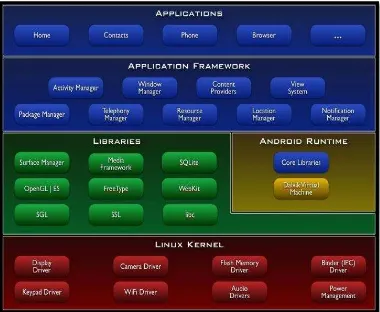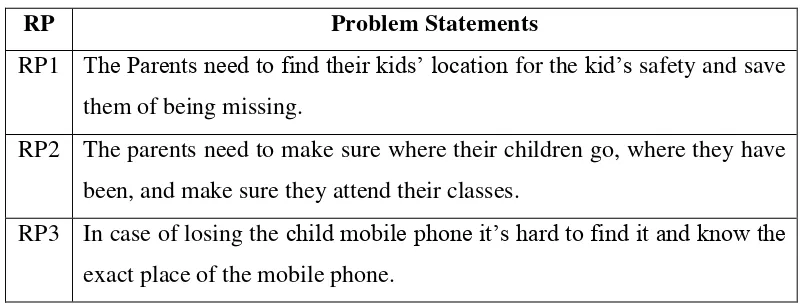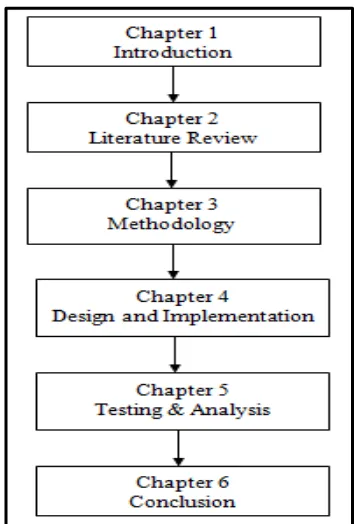AUTOMATED KIDS TRACKING SYSTEM USING ANDROIDS (KiTSA)
MOHAMMED NASSER AHMED
This report is submitted in partial fulfilment of the requirements for the Bachelor of Computer Science (Computer Networking)
FACULTY OF INFORMATION AND COMMUNICATION TECHNOLOGY UNIVERSITI TEKNIKAL MALAYSIA MELAKA
JUDUL:
SESI PENGAJIAN:
Saya
mengaku membenarkan tesis Projek Sarjana Muda ini disimpan di Perpustakaan
Fakulti Teknologi Maklumat dan Komunikasi dengan syarat-syarat kegunaan seperti
berikut:
Tesis dan projekadalah hakmilik Universiti Teknikal Malaysia Melaka.
Perpustakaan Fakulti Teknologi Maklumat dan Komunikasi dibenarkan membuat
salinan untuk tujuan pengajian sahaja.
Perpustakaan Fakulti Teknologi Maklumat dan Komunikasi dibenarkan membuat
salinan tesis ini sebagai bahan pertukaran antara institusi pengajian tinggi.
** Sila tandakan (/)
SULIT (Mengandungi maklumat yang berdarjah
keselamatan atau kepentingan Malaysia seperti
yang termaktub di dalam AKTA RAHSIA
RASMI 1972)
TERHAD (Mengandungi maklumat TERHAD yang telah
ditentukan oleh organisasi/badan di mana
penyelidikan dijalankan)
TIDAK TERHAD 2012 / 2013
AUTOMATED KIDS TRACKING SYSTEM USING ANDROIDS (KiTSA)
(TANDATANGAN PENULIS) (TANDATANGAN PENYELIA)
Alamat tetap: Emerald Park Bukit PM DR RABIAH AHMAD
Beruang – Melaka 75450 Nama Penyelia
Tarikh: 30th August 2013 Tarikh:
CATATAN: * Tesis dimaksudkan sebagai Laporan Projek Sarjana Muda (PSM).
DECLARATION
I hereby declare that this project report entitled
AUTOMATED KIDS TRACKING SYSTEM USING ANDROIDS (KITSA)
is written by me and is my own effort and that no part has been plagiarized
without citations.
STUDENT : MOHAMMED NASSER AHMED Date: 30th August 2013
(STUDENT’S NAME HERE)
SUPERVISOR : PM DR RABIAH AHMAD Date: 30th August 2013
iii
DEDICATION
To my beloved parents, that always giving me moral support that act as
power of my inspiration. To all my friends, your support and encouragement helps
me pass through and to solve problems in this project. To my supervisor, PM Dr.
Rabiah Ahmad, your guidance is highly appreciated and I learn a lot from you during
ACKNOWLEDGEMENTS
I grateful to Allah SWT almighty and oneness with overflow and His grace I have
completed this Final Year Project.
I would like to thank everyone who had contributed to the successful completion of
this project. I would like to express my gratitude to my supervisor, PM Dr. Rabiah
Ahmad for his invaluable advice, guidance and his enormous patience throughout the
development of the research.
In addition, I would also like to express my gratitude to my loving parent and friends
v
ABSTRACT
Automated Kids Tracking System using Androids (KiTSA) is a mobile system that is
can capture the location of phone. By using this system the parents will be able to detect their kid’s location at the real time, in addition they will have the history about their kids’ activities, the methodology used in this project is extreme programming. We use android: java language for the language of the program with XML as the
interface. The project then will proceed by using Eclipse and android SDK tools to
develop this system. For storing the database, we use online database which stored
ABSTRAK
Androids (KiTSA) adalah sistem mudah alih yang digunakan untuk mengenalpasti
lokasi telefon mudah alih. Dengan menggunakan sistem ini ibu bapa akan mengesan
telefon anaknya dimana mereka berada,tambahan pula ibu bapa akan dapat
mengetahui sejarah aktiviti anaknya. kaedah yang digunakan dalam projek ini ialah
"extreme programming". Kami menggunakan android iaitu bahasa java didalam
program ini dan XML sebagai antara muka. kemudian projek ini akan diteruskan
dengan menggunakan eclipse dan alat android SDk untuk mengembangkan sistem ini.
Untuk penyimpanan data, kami menggunakan pangkalan data dalam talian yang
vii
LIST OF TABLES
TABLE TITLE PAGE
Table 1.1 Summary of Problem Statements 3
Table 1.2 Summary of Research Question 4
Table 2:1 Comparison between the Existing systems and KiTSA 12
Table 3.1 Summary Milestones of PSM 1 16
Table 3:2 Gantt chart of Project Activities 17
Table 4.1 Summary of Laptop Requirement 22
Table 4.2 Summary of Android Requirement parents 22
Table 4.3 Summary of Android Requirement kids 23
Table 4.4 Data Dictionary for table kids 30
Table 4.5 Data Dictionary for table Parents 30
Table 4.6 Data Dictionary for Track 30
Table 4.7 Data Dictionary for Parents_List 30
Table 5.1 Responsibilities of personnel in testing process 51
Table 5.2 Summary of computer Requirements 52
Table 5.3 Summary of Android Requirement Parents 52
Table 5.5 Software Requirements 53
Table 5.6 KiTSA-Parents Testing Test Schedule 54
Table 5.7 KiTSA-Kid Testing Test Schedule 55
Table 5.8 KiTSA Welcome Activity test description 56
Table 5.9 KiTSA-kid Welcome Activity test description 56
Table 5.10 KiTSA Parents Management Activity test description 60
Table 5.11 Test description of Parent Tracking 62
Table 5.12 Number of test data in testing 64
Table 5.13 Test Result 65
ix
LIST OF FIGURES
FIGURE TITLE PAGE
Figure 1.1 Android Architecture 2
Figure 1.2 Incident Approach of project 5
Figure 2.1 GPS Tracker Watch 8
Figure 2.2 Debezt GPS Tracking System 9
Figure 2.3 My Location 10
Figure 3.1 Extreme programming Planning/Feedback Loops 15 Figure 4.1 KiTSA System Architecture 24
Figure 4.2 Parent’s login 25
Figure 4.3 Parent’s Main menu 25
Figure 4.4 Kid’s Login 26
Figure 4.5 Kid’s Mangement menu 26 Figure 4.6 KiTSA Navigation Design 27
Figure 4.7 KiTSA-Kid Navigation Design 28
Figure 4.8 Entity Relationship Diagram for KiTSA 29
Figure 4.9 DFD for KiTSA 33
Figure 4.10 Download Eclipse 34
Figure 4.11 Download SDK 36
Figure 4.12 the Android SDK Manager 37
Figure 4.13 Create Membership Account for KiTSA 39 Figure 4.14 Create Database Account for KiTSA 39
Figure 4.15 Create tables for KiTSA 40
Figure 4.16 Create php file for KiTSA 40
Figure 4.17 Current Location 44
Figure 4.19 Design the Layout 46
Figure 5.1 Welcome Activity 57
Figure 5.2 Sign up Activity 57
Figure 5.3 Help Activity 58
Figure 5.4 Kid Welcome Activity 59
Figure 5.5 Kid Sign up Activity 59
Figure 5.10 Parents Management Activity 61
Figure 5.11 List Activity 61
Figure 5.12 Parent Tracking activity 63
xi
LIST OF ABBREVIATIONS
KiTSA - Kids Tracking System using Android
RP - Research Problem
GPS - Global Positioning System
RQ - Research Questions
SMS - Short Message Service
3G - 3rd-Generation
NISSMART - National Incidence Studies of Missing, Abducted, Runaway,
and Thrownaway Children
ERD - Entity-Relationship Diagram
DFD - Data Flow Diagram
XML - Extensible Markup Language
PHP - PHP: Hypertext Preprocessor
JSON - JavaScript Object Notation
IDE - Integrated Development Environment
SDK - Software Development Kit
JRE - Java Runtime Environment
ADT - Android Development Tools
xiii
LIST OF ATTACHMENT
ACKNOWLEDGEMENTS………………...IV
ABSTRACT……………….V
ABSTRAK………...VI
LIST OF TABLES……… ………..VII
LIST OF FIGURES……… ………VIII
LIST OF ABBREVIATIONS………………IX
CHAPTER I INTRODUCTION
1.1 Project Background ... 1
1.1.1 Why Android ... 2
1.2 Problem Statement ... 3
1.3 Research Questions ... 4
1.4 Objectives ... 4
1.5 Project Scope ... 4
1.6 Project Significant ... 5
1.7 Expected Output ... 5
1.8 Report Organization ... 5
1.9 Chapter Summary ... 7
CHAPTER II LITERATURE REVIEW 2.1 Introduction ... 8
2.2 Related work/previous work ... 9
2.2.1 Facts and Findings ... 9
2.2.2 Existing System ... 9
2.2.2.1GPS Tracker Watch… ... ……..9
2.2.2.3My Location ... 11
2.2.2.4Use of Mobile Devices for Location Tracking ... 11
2.2.2.5 A New Generation Children Tracking System Using Bluetooth MANET .. 12
2.3 Analysis of current problem, justification ... 14
2.4 Proposed Solution / Further project ... 14
2.5 Chapter Summary ... 15
CHAPTER III METHODOLOGY 3.1 Introduction ... 16
3.2 Project Methodology ... 16
3.3 Project Schedule and Milestones... 18
3.3.1 Milestones ... 18
3.3.2 Gantt Chart ... 19
3.4 Chapter Summary ... 20
CHAPTER IV IMPLEMENTATION 4.1 Introduction ... 21
4.2 Project Requirements ... 21
4.2.1 Software Requirements ... 22
4.2.2 Hardware Requirement ... 24
4.3 Design... 25
4.3.1 User Interface Design ... 27
4.3.2 Navigation Design ... 28
4.3.3 Database Design ... 31
4.3.4 Data Flow Diagram ... 35
4.4 Implementation... 36
5.5 Test Schedule ... 56
5.6 Test Design ... 57
5.6.1 Test Description ... 57
5.7 Test Data ... 66
5.8 Test Result and Analysis ... 67
5.9 Conclusion ... 68
CHAPTER VI CONCLUSION 6.1 Introduction ... 69
6.2 Proposition for Improvement ... 70
6.3 Contribution ... 70
5.4 Conclusion ... 70
CHAPTER 1
INTRODUCTION
1.0 Project Background
As the development of technology, the application of mobile phone also has
tremendously increased.
Previously mobile phone was only used for sending SMS or making call, but
nowadays it can uses for many purposes and services, it help to provide better
human living.
Due to the tremendous development of mobile technology we are going to
develop KiTSA (Kids Tracking System using Android) on mobile phone.
KiTSA is a mobile system that can capture the location of phone. By using this
system the parents will be able to detect their kid’s location, in addition they will
have the history about their kids’ activities.
KiTSA will use database and it will require login, which means the kid’s mobile phone needs to be registered under their parent’s database and they will be monitored by their parents only, all that will be done by using Android.
So this chapter will include background about Android, problem statements,
research questions, objectives, project scope, project significant, expected output,
system, middle-ware and key applications. Android includes the
application framework, the Dalvik virtual machine, media support,
integrated browser and optimized graphics support. It also includes
support for GPS, Blue-tooth, Accelerometer, Camera, Wi-Fi and 3G
Networks amidst other things.
Below is Figure that shows the major components of the Android
operating system.
3
1.1 Problem Statements
- Many children are missing from their families.
According to National Incidence Studies of Missing, Abducted, Runaway, and
Thrownaway Children (NISSMART), in 1999, an estimated 204,500 children
were involuntarily missing from their caretakers because they were lost,
injured, or stranded; 68,100 of these children were reported to authorities.
- Parents should play a supporting role in deciding their child's future.
Parents should play a supporting role in deciding their child's future, and they
are really care about it, in order for the parents to help their children they need
to know more about their children, for example they need to know where are
their children always go? Are they attending their classes or no?
In case of losing the child mobile phone the parents also need to know and
detect where is the mobile phone at this moment.
In order to help the parents to find the answers for the previous questions, the
Idea of KiTSA comes out to provide easy and secure system for tracking the
children.
Table 1.1: Summarize of problem statements
RP Problem Statements
RP1 The Parents need to find their kids’ location for the kid’s safety and save
them of being missing.
RP2 The parents need to make sure where their children go, where they have
been, and make sure they attend their classes.
RP3 In case of losing the child mobile phone it’s hard to find it and know the
1.2 Objectives
1.2.1 To design automated kids tracking system using androids (KiTSA).
1.2.2 To develop KiTSA.
1.2.3 To test KiTSA.
1.3 Project Scope
The scope of the project is defined as follows:
1.3.1 Create a system that will enable parents to track their kid’s mobile phone.
1.3.2 Create a database where information regarding kid’s details will be stored
and managed.
1.3.3 To make the connection between the parents and kids mobile phone.
1.4 Project Significant
This system will give benefits to the parents who want to track their kids and monitoring kid’s movement by tracking the location, according to data history, it will have some important benefits in tracking the location and recording the history of kid’s movement.
1.5 Expected Output
By end of this project, the parents will be able to get some benefits of this project
that were expected to get results as shown as below:
RP RQ Research Questions
RP1 RQ1 Where is the kid right now?
RP2 RQ2 Which place the kids have visited before at given time?
5
1.5.1 The parents will be able track their kid’s location at current time.
1.5.2 The parents will be able to capture the location history stopped by the
kids and see the history where their kids have been.
1.5.3 Provide clear database about the kids and their parents for developer in
order to settle any problem with the system.
1.8 Report Organization
This project is consists of six chapters to visualize the analysis activities is shown
in Figure 1.2.
Figure 1.2: Incident Approach of project 1.8.1 Chapter One: Introduction
This chapter discusses the project background, problem statements,
research questions, research objectives, project scopes, expected output
Tracker Watch, and Debezt GPS Tracking System. Facts and finding of
the related works about the tracking system will be included in this
chapter as well.
1.8.3 Chapter Three : Methodology
This chapter describe about the methods of how this project will be carry
out. What steps and methods used to fulfil the research objectives stated
in the chapter 1.
1.8.4 Chapter Four : Design and Implementation
This chapter include the results produced of the system using the
simulator machine in eclipse, it also will discuss all the steps to get
KiTSA ready for the parents.
1.8.5 Chapter Five : Testing and Analysis
This chapter will discusses on the result of the system that will be
created, and discuss the result on the smart mobile phone.
1.8.6 Chapter Six : Conclusion
This chapter is a summarization of all the chapters cover in this project.
1.9 Chapter Summary
Initially mobile phones were developed only for voice communication and SMS
but now days the scenario has changed, voice communication is just one aspect
of a mobile phone. There are other aspects which are major focus of interest.
Two such major factors are web browser and GPS services.



